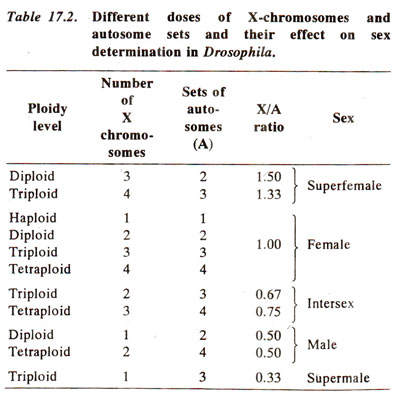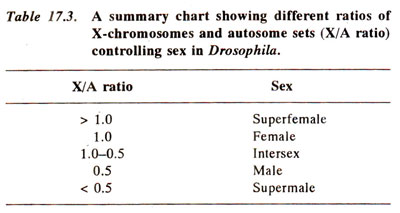The presence of triploid intersexes in the experiment conducted by Bridges (Fig. 17.3) is a definite proof that autosomes also carry factors for sex determination. These intersexes are sterile individuals, which are intermediate between male and female. The results, where intersexes, supermales and superfemales were obtained, were interpreted by Bridges in the form of
Genie Balance Theory of Sex Determination. According to this theory, ratio between the number of X-chromosomes and number of complete sets of autosomes will determine the sex. The X-chromosome is believed to carry female tendency genes, while autosomes carry male tendency genes. Both these sets of genes start functioning and there has to be a balance between them for an individual to become male or female. In one complete set of chromosomes (A + X), female tendency genes are more. Consequently if ratio between X and A is 1.0, it will be a female individual. The different ratios between number of X chromosomes and the number of A's, i.e. sets of autosomes (X/A) andtheir corresponding phenotypes for sex are shown in Table 17.2 and summarised in Table 17.3.


As shown in Table 17.2, when X/A ratio is 1.0, the individual will be female and when it is 0.5, it would be male. When this balance is disturbed, the individual deviates from normal male or normal female. For instance, when the ratio (X/A) falls between 1.0 and 0.50, it would be intersex; when below 0.50, it would be supermale and when above 1.0 it would be superfemale (Table 17.3).